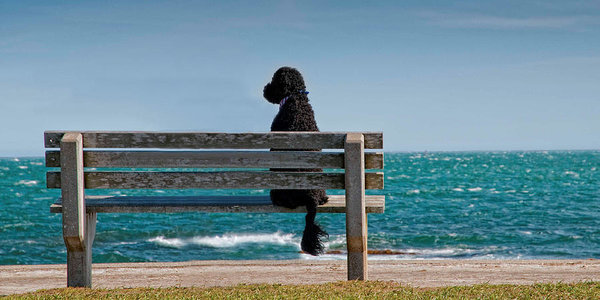
Portuguese Water Dogs are one of Europe’s oldest breeds. In Southern Portugal in an area called “Algarve,” water dogs were mentioned as early as 1297 as fishing dogs. In fact, it was in Algarve in the 1930s that most of the original PWDs were found and brought to Lisbon by wealthy shipping magnate, Vasco Bensaude, who started one of the major foundation lines of the breed as we know it today. By that time, fishing techniques had evolved and the dogs were no longer necessary or appreciated. When Bensaude gathered breeding stock, the number of PWDs had diminished and were becoming less and less seen on boats.
A far cry from the days of when importance of the dogs was evident in the fact that like any comrade, a PWD was given a fair share of fish to eat. Only right because these dogs were a huge part of a day’s catch: They herded fish into fishermen’s nets, retrieved items dropped overboard, acted as couriers from ship to shore, or ship to ship, and fetched lost tackle or nets.
Learning about the breed’s history was only part of the agenda of the First International Congress of the Portuguese Water Dog held in Portugal back in 2013. Attended by over 200 breed fanciers, affectionados, handlers, breeders and experts from over 200 countries, the congress was the brainchild of Carla Molinari, an all breed judge and president of the Clube Portugues de Canicultura. Four days of water trial demonstrations, a technical study of the various breed standards, and various presentations on color genetics and health were followed by a match show and the annaul “Monografica,” a national specialty. By all accounts, the Congress was a tremendous success.
Image: “Patient Waiter” by Robin-Lee Vieira is available as a print, poster, and in items for the home and as an accessory here
